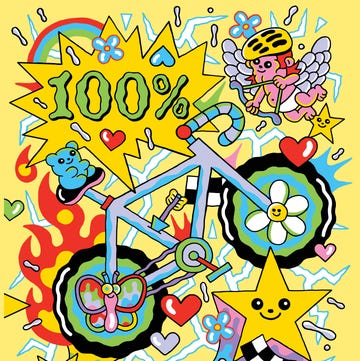There is a big problem with labeled tire sizing in the cycling industry; you can plainly see it in the lead image of this story. That is a photo of two road tires, both labeled as 28mm, mounted on identical rims, and inflated to an identical pressure. The problem is that these tires are very different in actual size, making the labeled 28mm size pretty much useless for riders shopping for a 28mm tire.
This isn’t exactly a new problem. It started in the early 2010s when Steve Hed released the first Belgium rims, which had an internal width of 21mm. Up to that point, most road wheels had internal widths of around 19mm, and riders quickly discovered that putting a 23—or 25mm road tire on a HED Belgium resulted in a slightly larger-than-advertised tire.
Fifteen years later, road rims feature widths anywhere from 20 to 25mm and can sometimes be hooked, hookless, or feature “mini-hooks.” If you mount one tire on all those possible combinations of rim widths, it will measure differently. Throw in the variation in tire widths from manufacturers, plus the variable of tire pressure, and you get a complete mess in which riders have no way of knowing how wide a tire will be until they have bought it and installed it on their wheels.
Riders are in this mess because tire manufacturers can’t consider every possible rim and tire pressure combination, making the advertised tire width mostly theoretical.
Currently, tire manufacturers use a design rim (or a measuring rim) to determine the labeled size for their models. These design rims are derived from ETRTO’s guidelines on how wide a tire can be safely used on a given width rim.
For example, the ETRTO chart states that a 32mm tire can safely be used on a rim with an internal width of 16 to 25mm. Many tire manufacturers will pick the middle of that range (around 21mm) as their design rim for 32mm tires. But before you think this sounds like it, at least that makes some sense. Surprise! Not every brand uses the same design rim for a particular tire size. This is how we end up with 28mm tires from different brands that aren’t even close to each other in actual size.
Besides being ridiculous and annoying, this creates an unfair burden on riders. Short of spending their hard-earned money on a tire and mounting it on their rim, there is almost no way to know the actual size of that tire. This can be especially frustrating for riders looking to run a tire size close to their frame's maximum stated clearance. This issue persists across road, gravel, and mountain bike tires.
Short of trying to find someone using the same rim and tire combination you are trying to use and asking them to measure it, there isn’t much for riders to do. This problem exists because tire manufacturers aren’t transparent with how they arrive at their labeled widths.
Manufacturers should take the significant first step of explicitly stating the inner width of the rim used to measure a given tire's size. But I prefer that they go one step further, measuring their tires on a range of modern rim widths and giving us the tire pressure at which they measure. This problem can and should be fixed by simply giving riders more information so they don’t have to waste their money.
Test Editor Dan Chabanov got his start in cycling as a New York City bike messenger but quickly found his way into road and cyclocross racing, competing in professional cyclocross races from 2009 to 2019 and winning a Master’s National Championship title in 2018. Prior to joining Bicycling in 2021, Dan worked as part of the race organization for the Red Hook Crit, as a coach with EnduranceWERX, as well as a freelance writer and photographer.

















